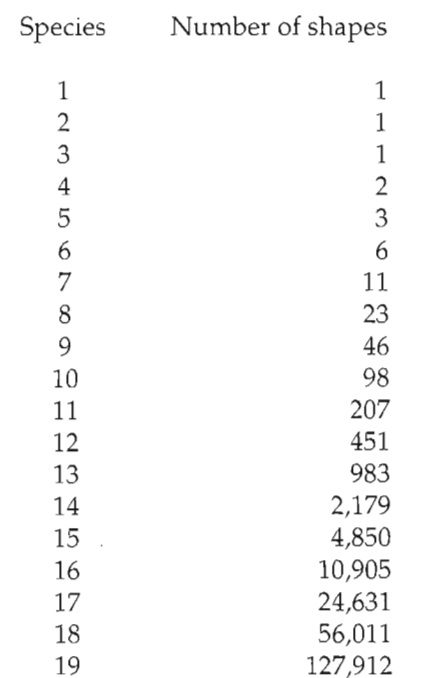Hi friends!
I'm studying about phylogenetic tree shapes. Most precisely about calculate all possible rooted bifurcatingtree shapes (not labeled). A book of Felsenstein named "Inferring Phylogenies" gives an algorithm to calculate that, but I don't understand how to.
The book provides a calculation as follows:

But my calculations does not match with following values table showed on the book.

can anybody help me with a step by step example??

